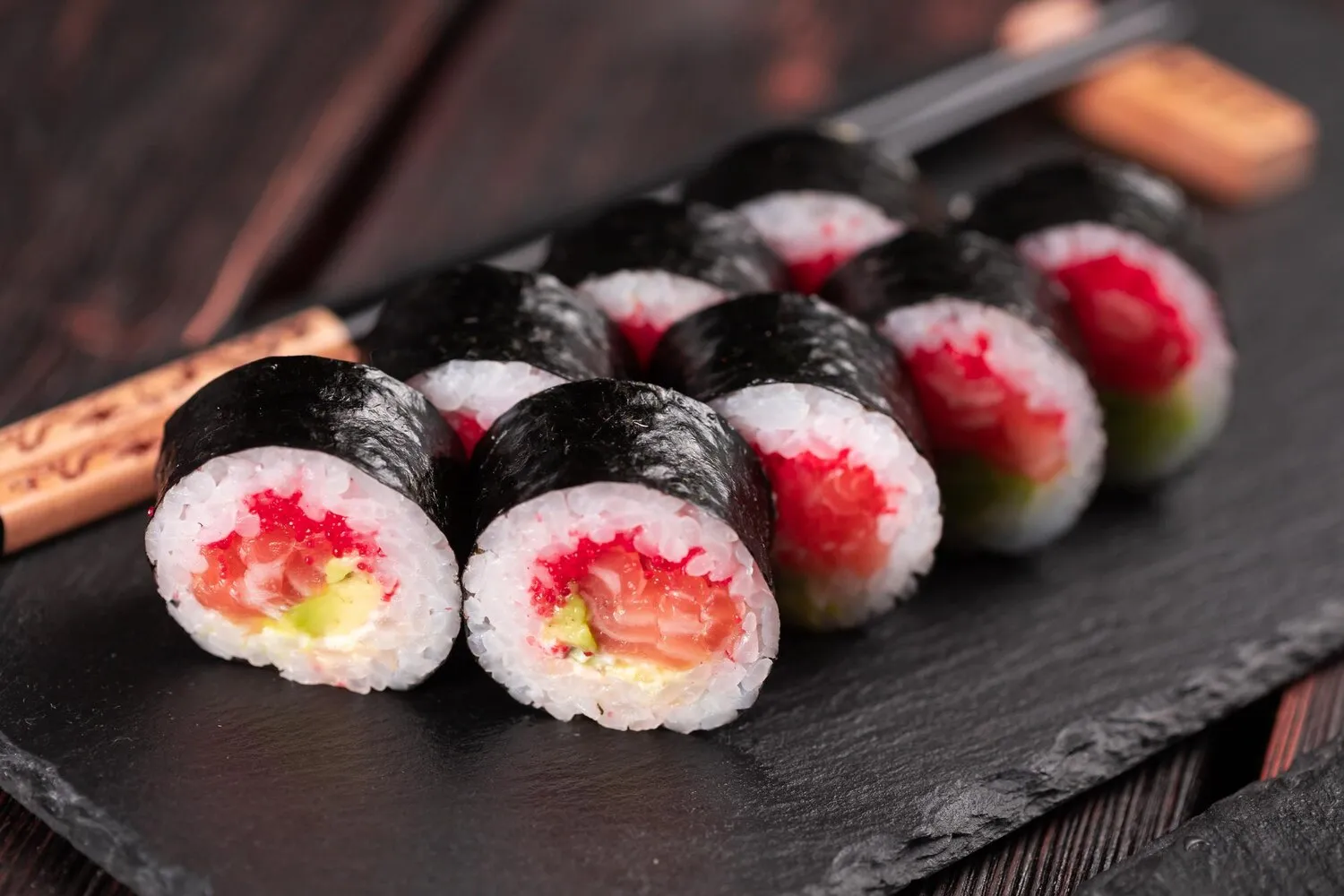
Maki de Salmón
Maki with salmon.
Nutrition Facts
* The % Daily Value (DV) tells you how much a nutrient in a serving of food contributes to a daily diet. 2,000 calories a day is used for general nutrition advice.
Maki sushi, including salmon maki, evolved from earlier forms of rolled sushi that were initially a method of preserving fish in fermented rice. Over time, it transformed into a popular and aesthetically pleasing dish enjoyed worldwide. Salmon, while not traditionally a staple in early Japanese sushi, gained popularity later, especially with the introduction of farmed salmon.
Maki de Salmón is a popular and accessible form of sushi, often associated with casual dining and social gatherings. It embodies the Japanese principles of visual appeal, fresh ingredients, and balanced flavors.
Presentation
The presentation of maki sushi is crucial, with careful attention paid to the arrangement of ingredients and the slicing of the rolls to create visually appealing pieces. It reflects the Japanese appreciation for aesthetics in food.
Sharing and Social Dining
Maki sushi is often served in platters designed for sharing, making it a popular choice for social gatherings and communal dining experiences. It encourages interaction and conversation.
Ingredient Quality
The quality of the ingredients, particularly the salmon and rice, is paramount. Fresh, high-quality salmon and properly prepared sushi rice are essential for an excellent maki experience.
Maki de Salmón offers a balanced combination of savory, umami, and slightly sweet flavors, complemented by the fresh taste of salmon and the vinegared rice.
The primary flavors come from the fatty richness of the salmon, the tangy sweetness of the sushi rice (seasoned with rice vinegar, sugar, and salt), and the nori seaweed's subtle salty, oceanic taste. Wasabi adds a sharp, pungent kick, while soy sauce contributes saltiness and umami. Pickled ginger (gari) provides a palate-cleansing sweetness and slight spiciness. Vegetables like cucumber or avocado, if included, offer freshness and creamy or crunchy textures.
Rice Preparation
Use short-grain Japanese rice specifically for sushi. Rinse the rice thoroughly before cooking. Season the cooked rice with a mixture of rice vinegar, sugar, and salt, and let it cool to room temperature before using.
Salmon Selection
Choose sushi-grade salmon, which is specifically handled to minimize the risk of parasites. Ensure the salmon is fresh, firm, and has a vibrant color.
Rolling Technique
Use a bamboo rolling mat (makisu) to tightly roll the sushi. Moisten the mat with water to prevent the rice from sticking. Apply even pressure while rolling to create a uniform shape. Wet the knife before slicing the maki to get clean cuts.
Wasabi and Soy Sauce
Serve with fresh wasabi or wasabi paste and high-quality soy sauce. Do not mix the wasabi into the soy sauce as this dulls the flavors. Instead, place a small amount of wasabi on the salmon.
Explore additional Maki dishes and restaurants
Explore MakiDiscover top dining spots and culinary experiences in Cádiz.
Explore CádizLearn more about the food culture, restaurant scene, and culinary heritage of Spain.
Explore Spain